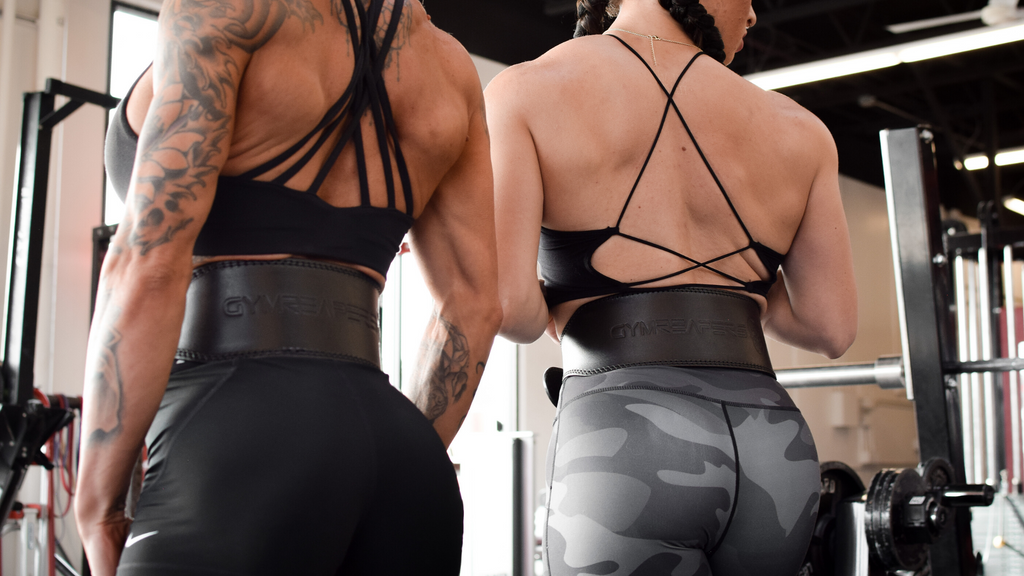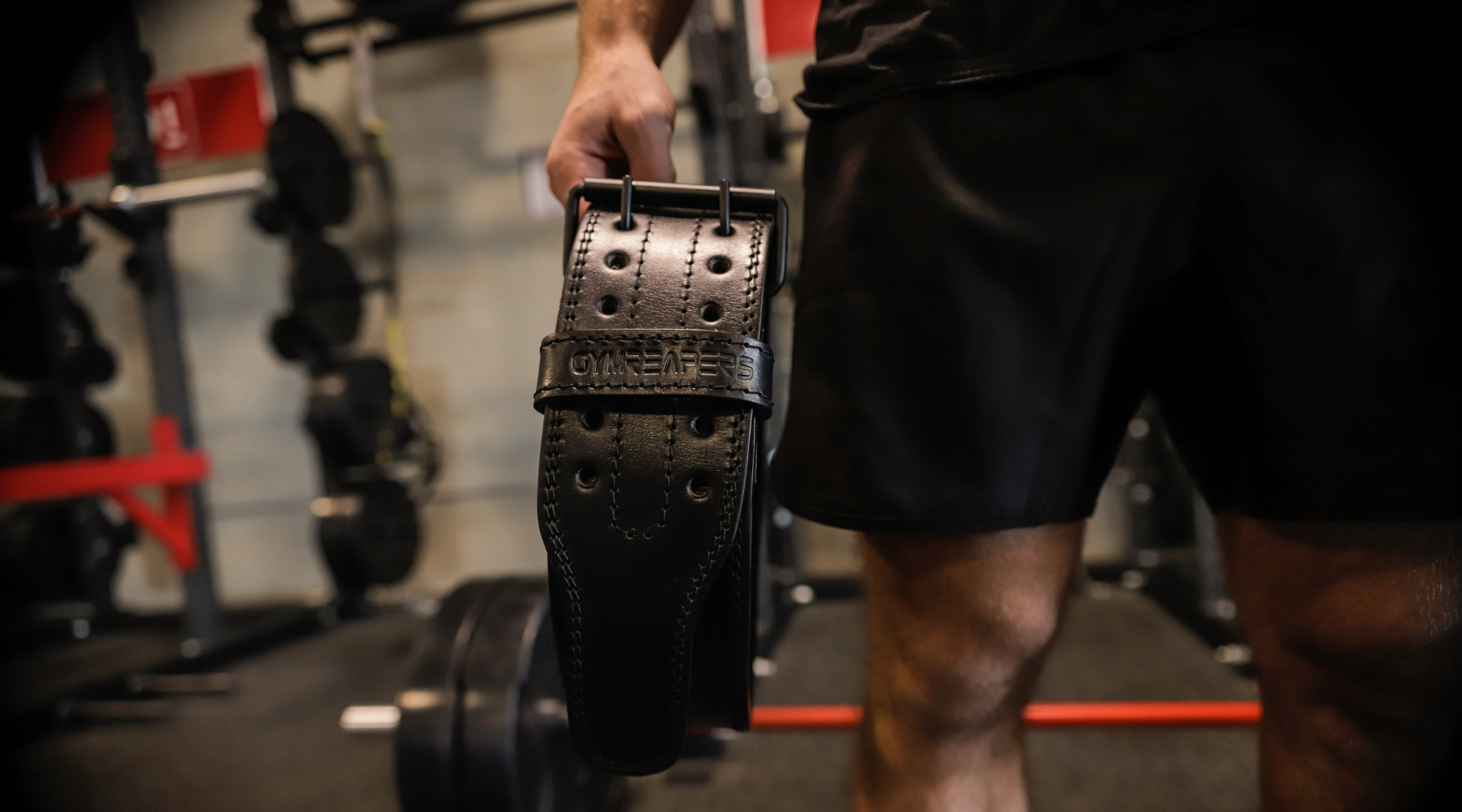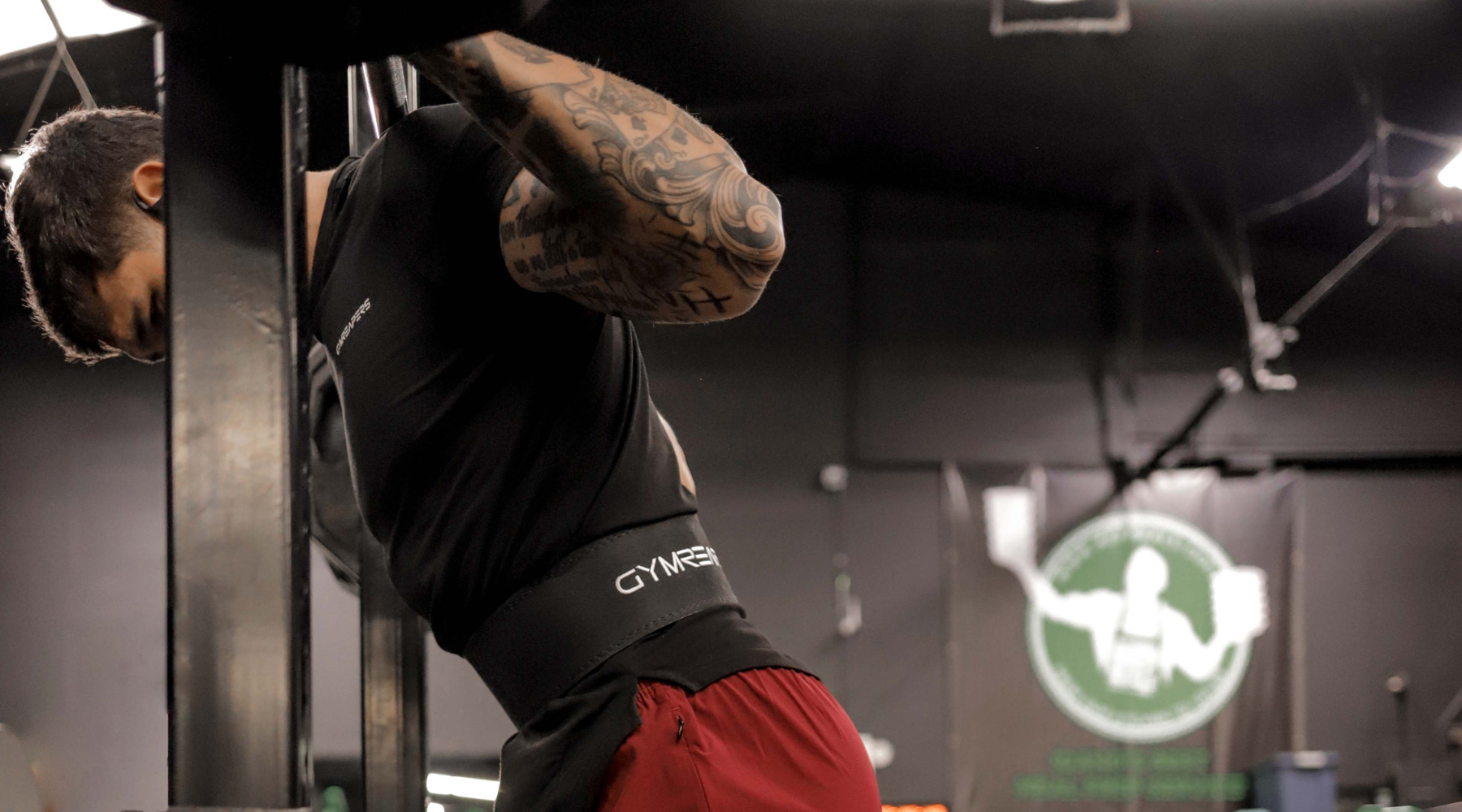As a weightlifting aficionado, I can say that choosing lifting belts can be daunting, especially for women, because we girls have unique needs.
When choosing the best lifting belt for women, you must consider design, size, materials, thickness, and other features. I will discuss each of these in detail below from a female perspective.
Key Takeaways
- Most women should pick a leather lifting belt that is between 7-10mm thick that either has a lever or prong closure mechanism.
- Lifting belts made from Nylon are also a good option for women, especially if you’re only looking for a little bit of support and you want to maximize comfort over improving max strength.
- Lifting belts can help you support your core musculature and protect your back while lifting, but they are not a replacement for poor technique.

Should Women Use Lifting Belts?
Yes, women should wear lifting belts to support their spine, but using them correctly and becoming aware of all the potential risks is essential.
Lifting belts help female lifters to protect their spine, which is the primary purpose of these products. But, on the other hand, all this boosted protection of one's back changes the gravity center of the body, putting more tension on the pelvic floor.
That particular area consists of lower abdominal muscles. If those muscles aren't strong enough, a lifter's uterus and even her bladder could collapse (albeit this is a rare situation). This issue is more often seen in post-menopausal female lifters.
So, it's recommended to use women's lifting belts to achieve two goals:
- Lower tension around the lower back area in the case of upright lifting positions;
- Prevent back hyperextension in the case of overhead weightlifting.
Finally, belts help users maintain a correct body form and posture. But, according to Savanna Peters, you shouldn’t wear them all the time:
"Belts shouldn't be worn all the time. They're made for when you put heavier loads on your back, like deadlifts and squats. During training, some sets must be done without the belt so that your core keeps on becoming stronger."
— Savanna Peters, personal trainer
Are There Risks for Women Who Wear Lifting Belts?

Yes, there are certain risks for women who use lifting belts. But you could avoid those if you know how to wear them properly.
Lifting Belts Might Increase Your Blood Pressure
Belts compress one's blood vessels found around the abdominal area. Hence, using lifting belts raises systolic blood pressure.
This should be fine as long as you use the belt occasionally. After all, our blood pressure increases quite a bit during all types of workouts, including weight training.
Lifting Belts Could Weaken Your Muscles
This is hard info to digest, I know. However, it seems counterproductive to wear fitness gear that could help improve your performance only to find out there's a risk that your muscles might become weaker.
First of all, these two things don't occur simultaneously.
Secondly, the results you'll achieve and the risk you'll expose yourself to vary based on how you wear and use the belt.
The risk of weakened muscle mass appears when lifters forget to engage their muscles. Instead of bracing with their muscles, they rely entirely on the lifting belt.
So, avoid wearing these belts for the entire workout. Otherwise, your muscles might become accustomed to remaining relaxed at all times.
Related Article: How to Choose a Crossfit Lifting Belt?
What Makes a Lifting Belt Different for Women?

Lifting belts for women are similar to those used by male lifters, only that female belts come in smaller sizes. That’s logical since the female body has smaller proportions.
Different Sizes
Most men’s lifting belts feature a four-inch width, while those made for women range between three and four inches.
A woman wearing a wider belt might bruise her hips or ribs, if not both, especially if they have a smaller torso length.
Moreover, wider belts could restrict women's movements, leading to poorer gains.
Related Article: Can You Wear a Lifting Belt While Pregnant? What Science Says
Tips for Choosing the Best Lifting Belt You Can Afford
To ensure you're buying the right lifting belt for your body, you must measure your waist and consider the belt's size, thickness, materials, and other aspects.
Thickness & Width
The most popular thicknesses are 10mm and 13mm. Although some belt manufacturers, like Gymreapers, have a 7mm option too.
Most women should opt for either the 7mm or 10mm belts.
Almost all women wouldn’t find 13mm belts useful unless you’re an elite competitive powerlifter in the heavy weight category.
In terms of width, you can choose between 2.5 inches, three inches, and four inches. That choice should be based on two body areas and their measurements:
- Your torso’s length;
- Your hips’ width.
Taller women can easily use wider belts (4 inches), while petite lifters should stick to narrower alternatives.
Materials – Nylon vs. Leather
The most popular fabrics are nylon and leather.
Many women prefer nylon belts. That’s because nylon provides increased flexibility and fewer movement restrictions across a wider array of exercises.
However, high-quality leather materials lead to more durable belts that can be used longer and under heavier loads.
Belt Size
Smaller female athletes might have a more challenging time finding the most suitable belt for their size. A few brands sell belts made for tiny waists, so pay attention to that. Don’t think that if your pants size is S, you should get the same size for your lifting belt.

Instead, you must measure your waist and meet the instructions or requirements offered by manufacturers. Each brand provides its own girth distribution and size chart, so check those to discover the correct size.
Your Main Activity/Purpose of Using the Belt
Are you into powerlifting or Olympic weightlifting specifically? That's important to know because these belt types have similarities and differences.
Weightlifting belts are more flexible and made of either leather or nylon. Weightlifting belts feature thinner fronts and wider backs (on average). For example, having a 4-inch width in the back, which then tapers to a 3-inch width in the front.
Powerlifting belts are thicker and more rigid and generally made of leather. Powerlifting belts have a consistent width from one end to the other, usually four inches.
Comfort
Comfort is one of the most important aspects female athletes look for when buying fitness gear.
The key thing to know, however, is that comfort and support are usually opposite goals. If you want greater levels of comfort, you’re likely going to sacrifice some support.
So what you have to ask yourself is whether you plan on using a belt for heavy lifting or more for all types of exercise.
Closure Mechanisms: Velcro vs. Prongs vs. Lever
There are three types of closure mechanisms for lifting belts, each with its own pros and cons:
-
Velcro Belts: Velcro belts are thinner and more lightweight, but they might be less resistant than prongs and lever belts. You can quickly put on or take off this belt type, but the performance boost it provides is not as powerful as the one offered by prongs or lever belts.
-
Prong Belts: Those with prongs are made of leather, and their buckles feature one or two prongs; you must put them on just like you would with a pants belt. Prong belts are more affordable and easier to adjust if you like them, wear them tighter for some lifts and looser on others.
-
Lever Belts: Lever belts have holes and teeth that you must hook on. If you want to adjust the belt's tightness, you must use a screwdriver - so it’s not as easy to adjust. They’re more expensive than prong belts, but they offer the most secure fit for heavy lifting.
Examples of Women’s Lifting Belts
Here are some great lifting belts for women that you should consider.
Nylon Lifting Belt - Best For All Types of Exercise

Nylon quick lifting belts are known for their increased flexibility, which combines comfort with support. Their contoured shape is form-fitting and functional. This belt comes with a sturdy buckle and premium padding.
Women who are satisfied with an average level of support and want to use something that’s comfortable should opt for this belt type. Most lifters will be happy with it since it allows them to perform a wide range of movements - everything from kettlebell swings to front squats.
If you’re just starting to lift weights and you want to integrate the belt throughout your entire workout, then this belt is an excellent choice.
7mm Leather Belt - Best For Both Support & Comfort
The 7mm leather belt is thicker than nylon belts, yet thinner than most leather belts, and provides excellent support, especially with compound movements. It's durable due to the reinforced leather material and significantly more versatile compared with thicker leather belts.
You should buy this one if you want a high support level yet still retain some level of comfort. It’s the best of both world’s when it comes to lifting belts for women.
Also, its tapered design, going from 4-inches in the back to 3-inches in the front, allows for a a better fit - since most women will have smaller torsos than men.
10mm Single Prong Lifting Belt - Best for Serious Female Lifters
This 10mm single prong leather belt provides the most support, and it's meant to be used during serious strength training or by more experienced lifters.
It has reinforced stitching and heavy-duty construction, yet it's easy to use and can be simply to adjust (because it’s not a lever belt). If you’re ready to lift some serious weights, this belt could be the ideal choice for you.
Also, this belt is approved for use in powerlifting competitions - if you plan to compete.
Want to learn more about the different kinds of lifting belts? Check out our article 7 Types of Lifting Belts Explained
What to Avoid – Belts That Women Shouldn’t Buy
There is really only one criterion that I would actively avoid if you are a female lifter.
6-Inches Wide Belts ... You should avoid buying standard lifting belts that are 6-inches in the back.
They’re too wide for a woman’s torso, measuring around six inches in the back and approximately four inches in the front.
That means that part of your ribcage will be covered by this type of belt, and it will feel very uncomfortable.
Things to Avoid If You’ll Compete
Finally, for those who plan on competing, there are certain rules to follow regarding lifting belts that are accepted in competition:
- Avoid stretchable materials and opt for leather
- Avoid belts with padding
- Avoid customized belts or fancy designs; only simple designs are accepted
- Avoid lifting belts that exceed a width of four inches or are thicker than 13mm (for powerlifting) and 12mm (for weightlifting)
Simply put, those who compete should not buy belts that don’t meet specific characteristics like the ones I’ve just mentioned above.

Benefits of Using Lifting Belts for Women
Lifting belts help you protect your spine and lift heavier weights.
Boosted Intra-Abdominal Pressure
Your core area will be tight and braced, which means you’ll be able to lift heavier weights or perform more strenuous movements.
Improved Core and Spine Stability
The pressure mentioned above also stabilizes the spine and perfects your overall posture. As a result, your back will keep its normal strength and stability even when you engage in more challenging lifting workouts.
With your abdomen tight, your spine won’t be hurt when you lift weights.
Restricted Lower Back Movement Range
Lifting belts hold your lower back tight. This protects that area of the body because those muscles will only be able to do restrictive and safe motions.
Lowered Stress on Your Lower Back
You can perform countless exercises while wearing a belt because a belt creates a secure and protected environment. Tightness is the key concept when wearing lifting belts. You will benefit from decreased injury or back pain risks due to the additional stability.
Reduced Spinal Shrinkage
Due to belts, the lifter’s spinal erector muscle will perform better in supporting the athlete’s lower back. This further enables the athlete to work with heavier weights without increasing her spinal tension.
Several studies, including the one you’ll find above, mention that while lifting belts can decrease spinal compression by approximately 10%, lifters must inhale before they lift.













Leave a comment
All comments are moderated before being published.
This site is protected by hCaptcha and the hCaptcha Privacy Policy and Terms of Service apply.